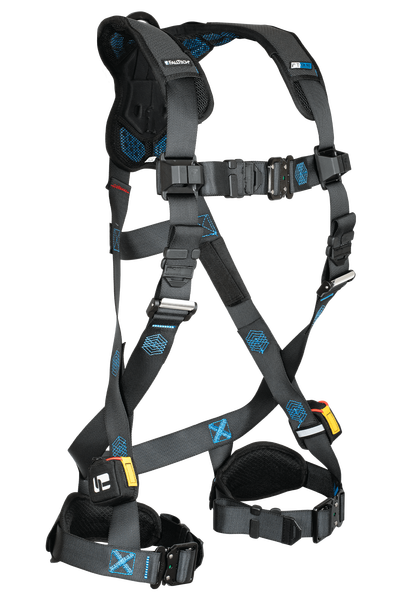Respiratory Protection from Wildfire Smoke
As the summer months bring on wildfires in certain regions of Canada, it’s important to reduce your exposure to wildfire smoke, but also to prepare yourself from potential exposure to wildfire smoke, by equipping yourself with appropriate respiratory protection.
Wildfire smoke can travel long distances from the source of the fire, and can affect the quality of air.
What's in Wildfire Smoke?
Wildfire smoke is a constantly changing mixture of particles and gasses, including carbon dioxide, carbon monoxide, nitrogen oxide, and also may contain sulfur oxides, volatile organic compounds, and other compounds such as hydrocarbons and formaldehyde. Short term effects from smoke exposure include irritation to your eyes, nose, throat, and lungs. It can make you cough or wheeze, and can make it difficult to breathe. There is also the concern of possible long term effects, such as chronic health problems, and increased risk of cancer.
Taking Precautions
Being well prepared for poor air quality in your area can help you mitigate the health hazards that come with smoke and ash from wildfires.
It is recommended to consider taking extra precautions to reduce your exposure:
- Remain indoors as much as possible.
- Ensure your HVAC system is working properly
- Reduce the amount of outdoor air from entering your building
- If you are in a vehicle, keep vents and windows closed as much as possible, and use the ‘recirculate’ on your air conditioning.
Always follow the the direction of smoke and air quality advisories in your area. In the case of an emergency, where outdoor exposure is required, being prepared with a high quality respirator can help greatly reduce your exposure to the harmful chemicals and toxins found in wildfire smoke.
Should You Have A Respirator?
Although, if the air quality is of concern, you should be staying indoors as much as possible, or in worse circumstances, avoiding the region. In the case of an emergency however, owning a proper respirator can help protect you from some of the elements of wildfire smoke. At minimum, an N95 particulate-filtering facepiece respirator such as the 2700 N95 Series Particulate Respirators With HandyStrap® by Moldex help protect yourself against wildfire smoke exposure. However, there are more advanced solutions that can provide added protection against fine particulates and irritant gasses and vapours.
The Sundstrom Wild Land First Responder Respirator Kit SR 100 Half Mask is a suitable option for emergency preparedness. This kit comes with an organic vapour/chemical cartridge which protects against certain levels of organic vapours, sulfur dioxide, chlorine, hydrogen chloride, and hydrogen fluoride.
As Wildfire smoke is a constantly changing mixture of gasses and particulates, there's never a guarantee that your respirator will provide protection from certain elements that may be present in Wildfire smoke, but a Kit such as the Sundstrom Wild Land First Responder Respirator Kit SR 100 Half Mask provides a more advanced protection against more possible contaminants in the air.
The SR100 should not be used in atmospheres with limited oxygen as the respirator is not oxygen producing, it only filters particulates. In situations where the atmosphere is oxygen deficient, you should use a supplied air breathing apparatus.
Note: The SR100 Half Mask respirator is not meant for use in environments that are immediately dangerous to life and health, they are also not meant for use in atmospheres which are oxygen deficient. It is recommended that self contained breathing apparatus or supplied air respirators are used in IDLH (Immediate Dangerous to Life and Health) atmospheres.
If you have any questions about respiratory protection, we are always here to help and provide expert level advice. Feel free to contact us anytime.


